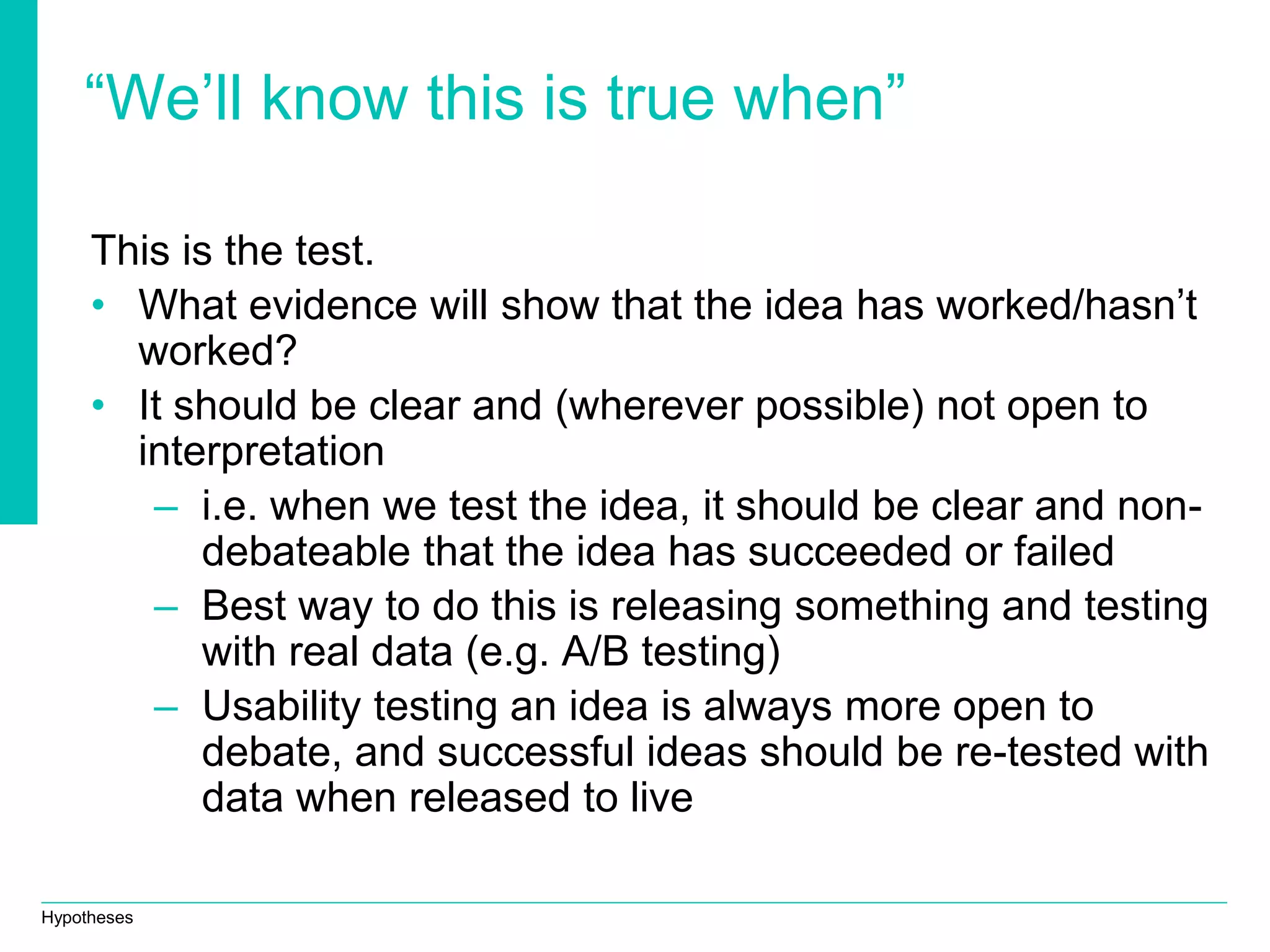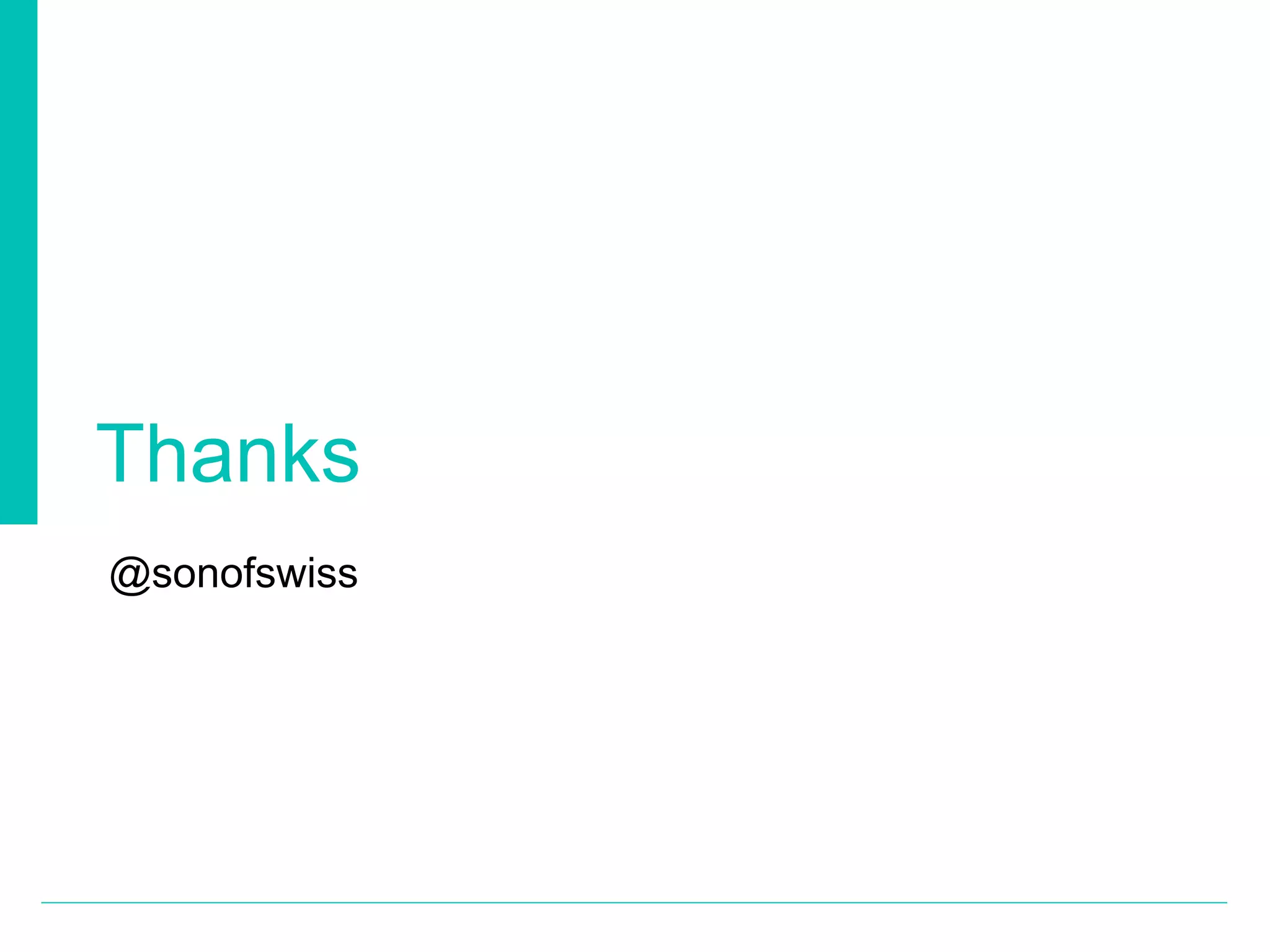The document discusses the importance of hypothesis-driven design in product development, emphasizing that it adds structure and testability to design processes, ultimately reducing waste and enhancing user value. It outlines the characteristics of good hypotheses, suggests formats for articulating them, and provides an example involving the clarity of due dates in activity lists. The text advocates for a systematic approach to evaluating ideas based on user observations and evidence to guide design decisions.
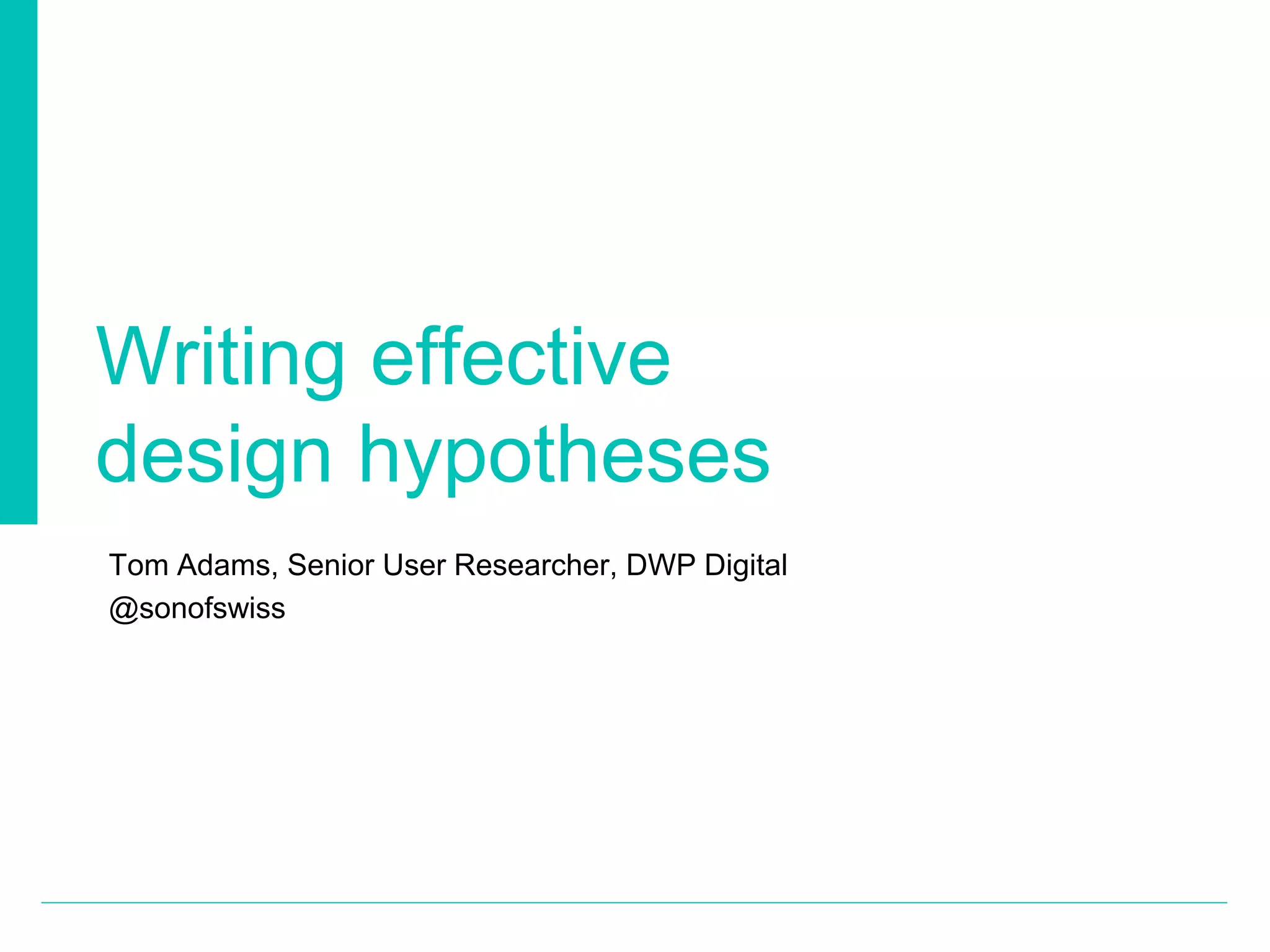
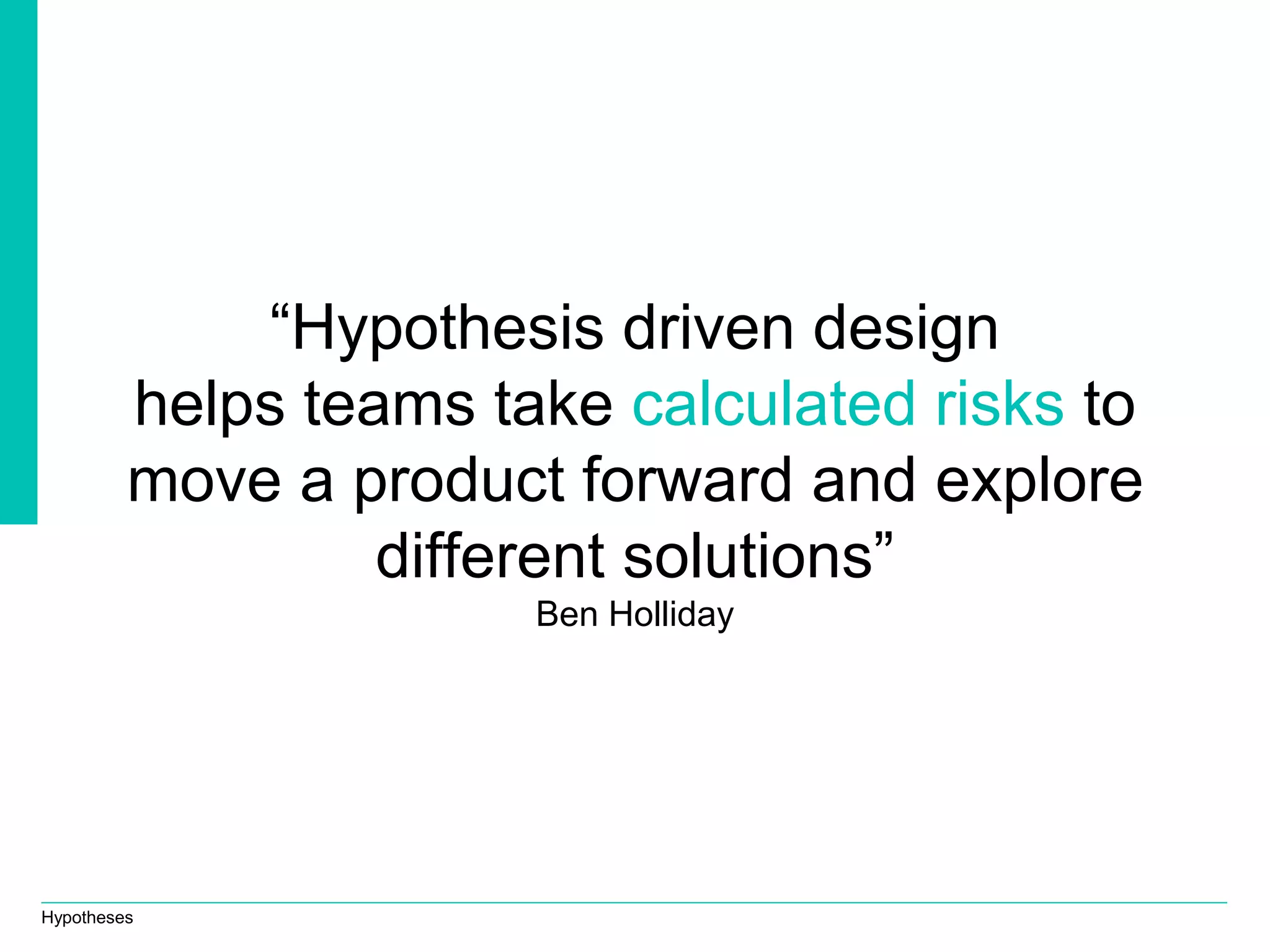
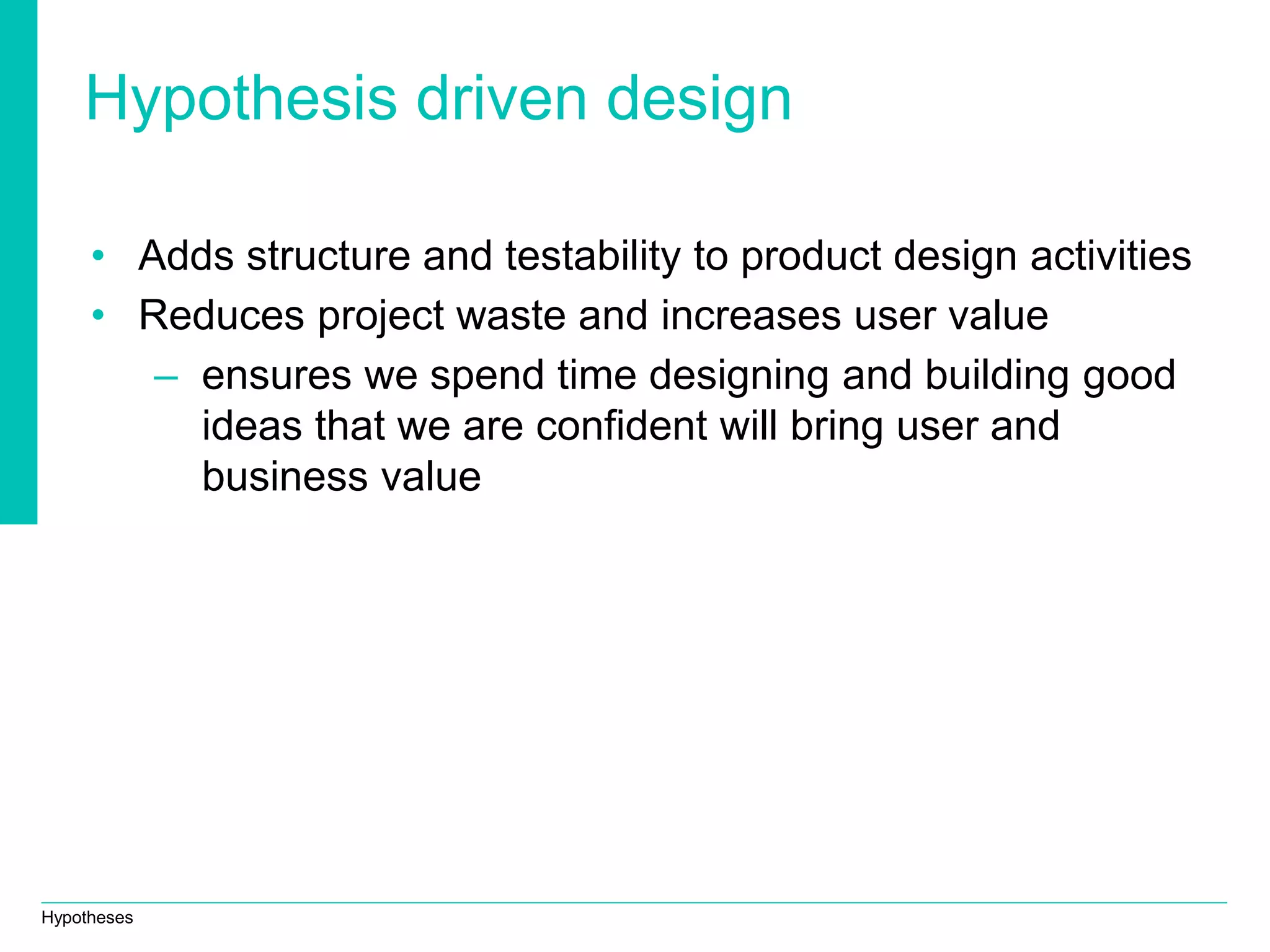
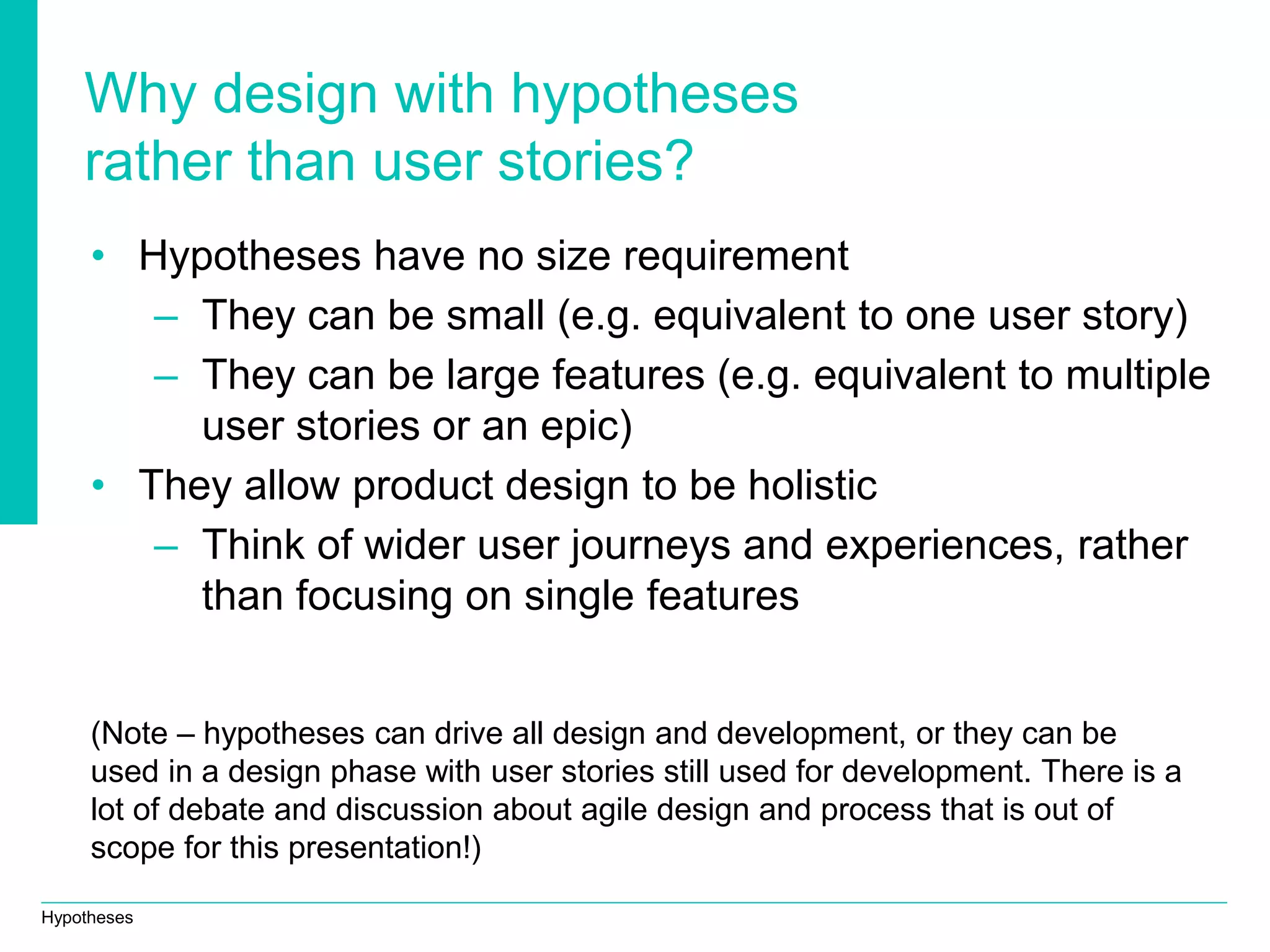
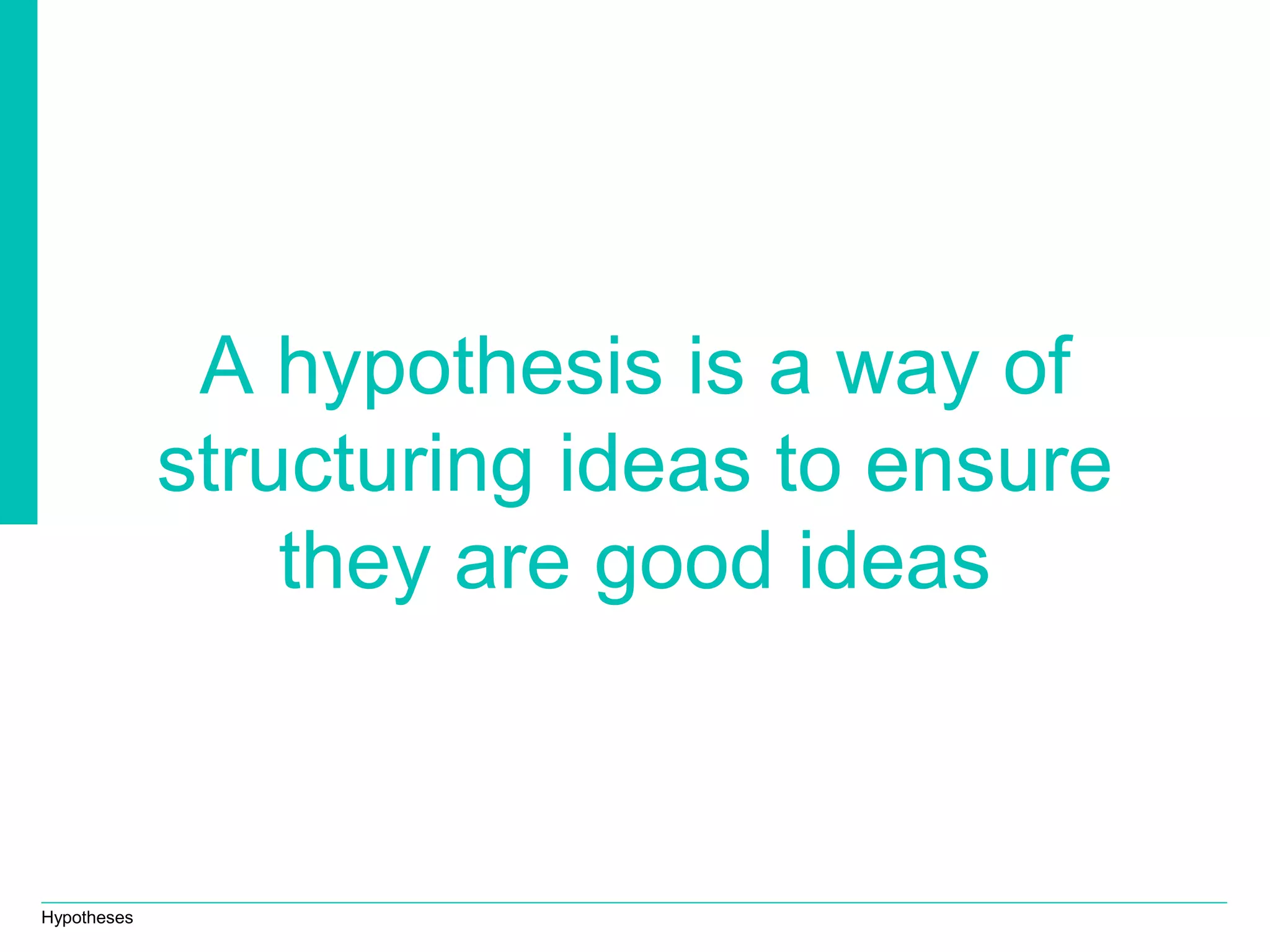

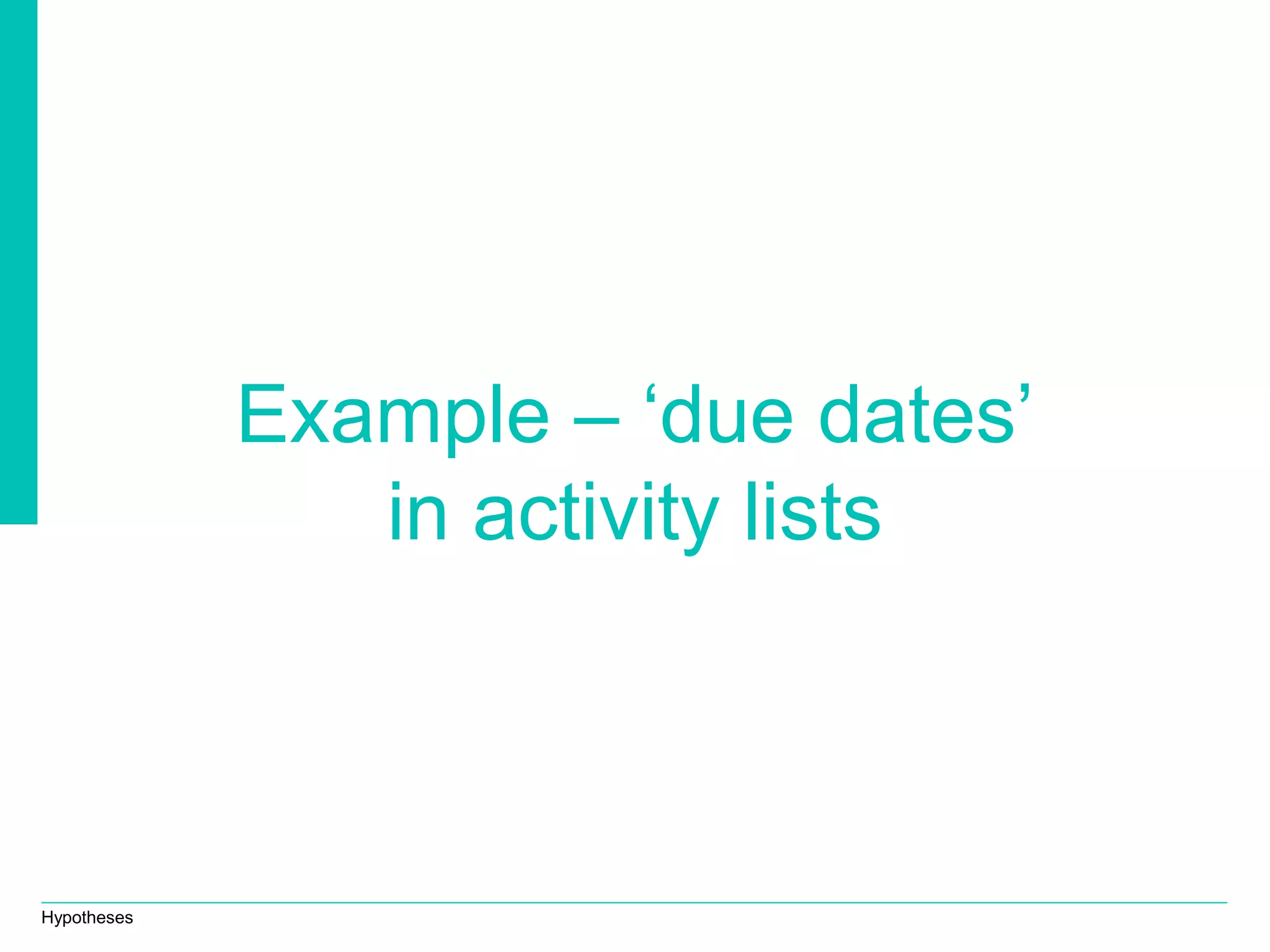
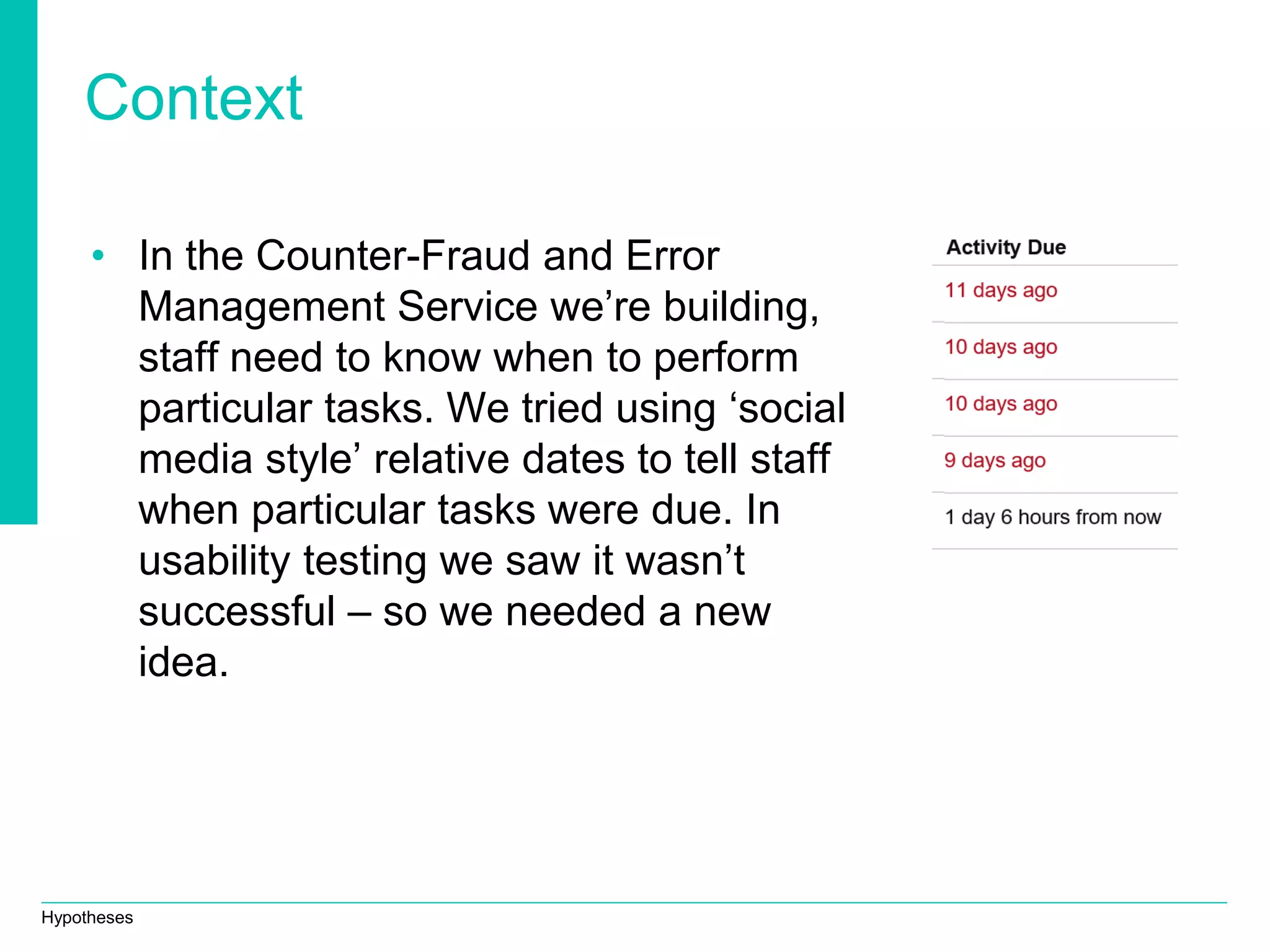
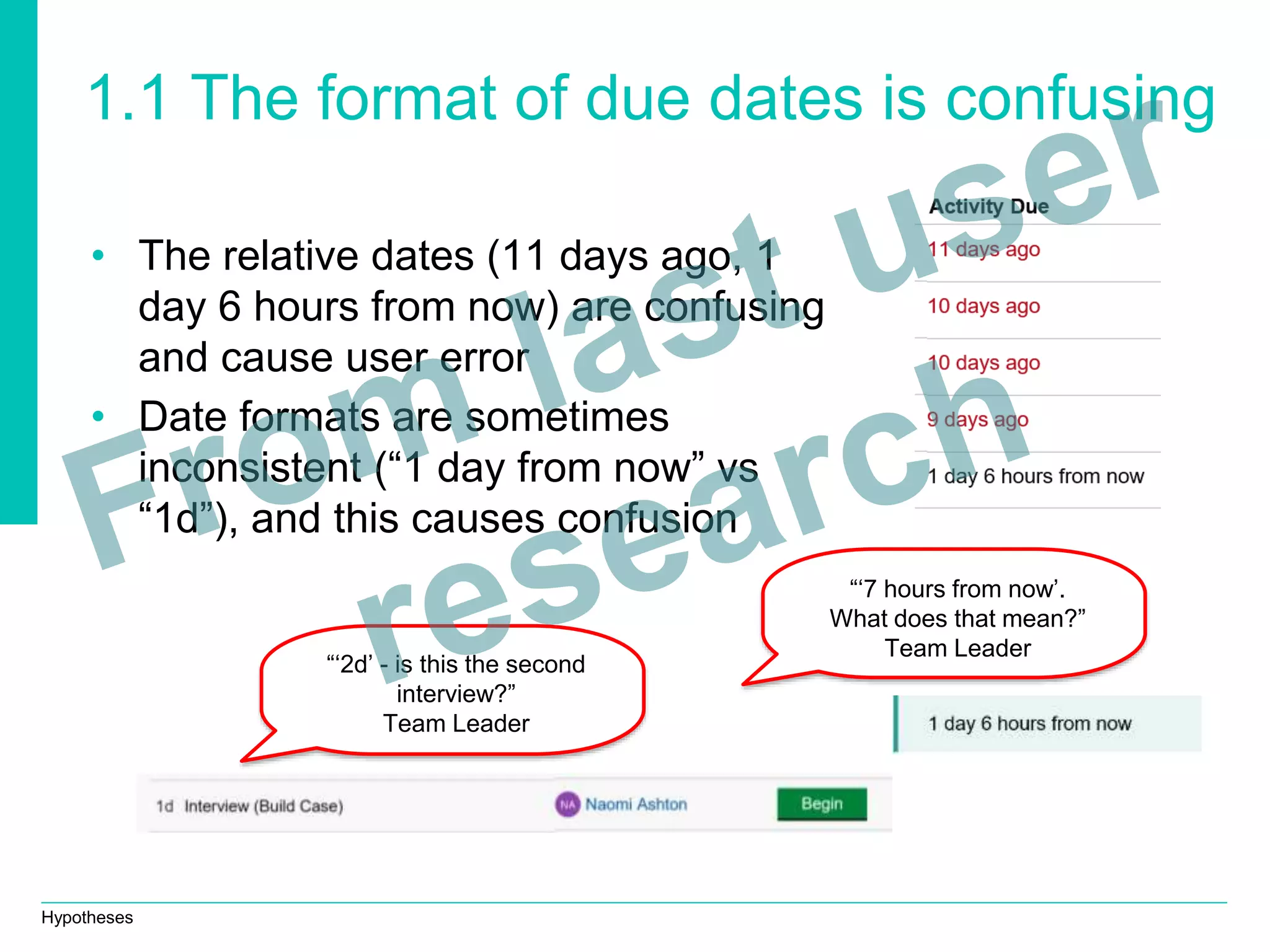
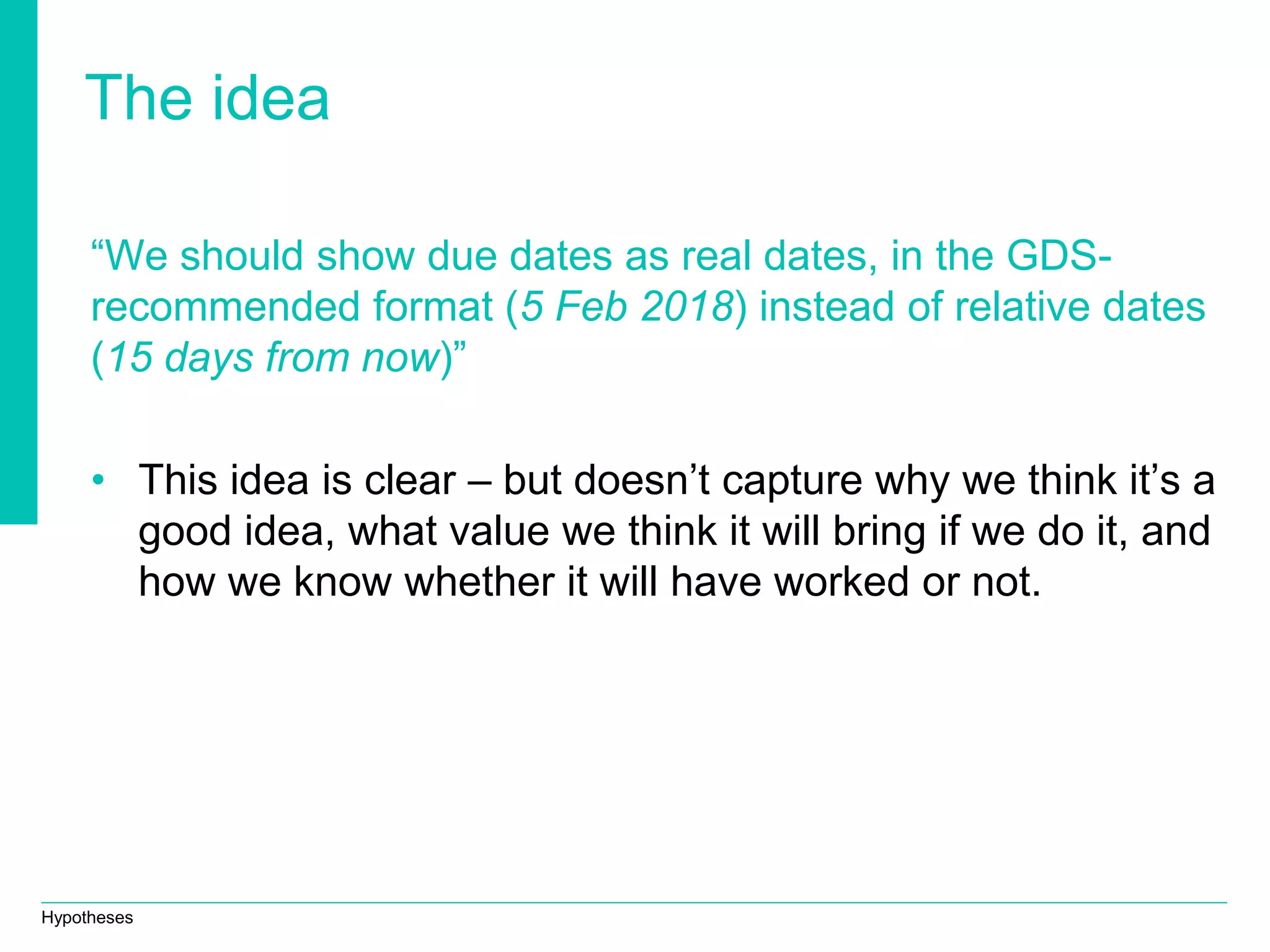
![Hypotheses
What makes an idea a good idea?
• Let’s do [idea]!
• If we do [idea], we will get [outcome].
• Because [something we know], if we do [idea], we will get
[outcome].
• Because [something we know], if we do [idea], we will get
[outcome], and this will be proven when we see
[evidence].](https://image.slidesharecdn.com/writingeffectivedesignhypotheses-180118114153/75/Writing-effective-design-hypotheses-11-2048.jpg)
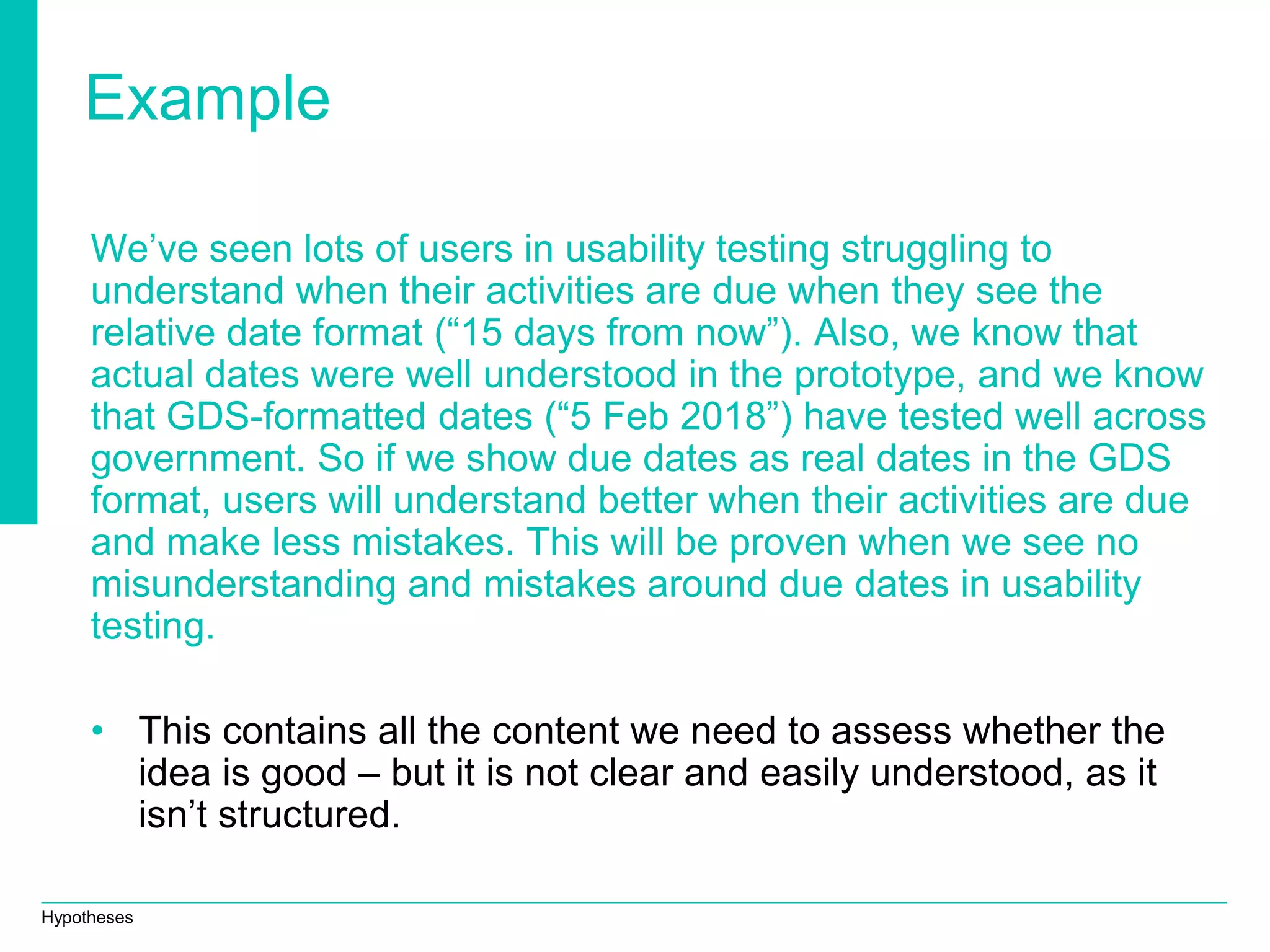
![Hypotheses
Because [things we know or have seen]
We believe that [idea]
Will result in [outcome]
We’ll know this is true when [evidence]
(Note – there are lots of different hypothesis formats out there. This is my
preferred structure, but as long as you cover the important content, search
Google and try a few to find which you’re comfortable with!)](https://image.slidesharecdn.com/writingeffectivedesignhypotheses-180118114153/75/Writing-effective-design-hypotheses-13-2048.jpg)
![Hypotheses
Because [things we know or have seen]
We believe that [idea]
Will result in [outcome]
For [users]
We’ll know this is true when [evidence]](https://image.slidesharecdn.com/writingeffectivedesignhypotheses-180118114153/75/Writing-effective-design-hypotheses-14-2048.jpg)
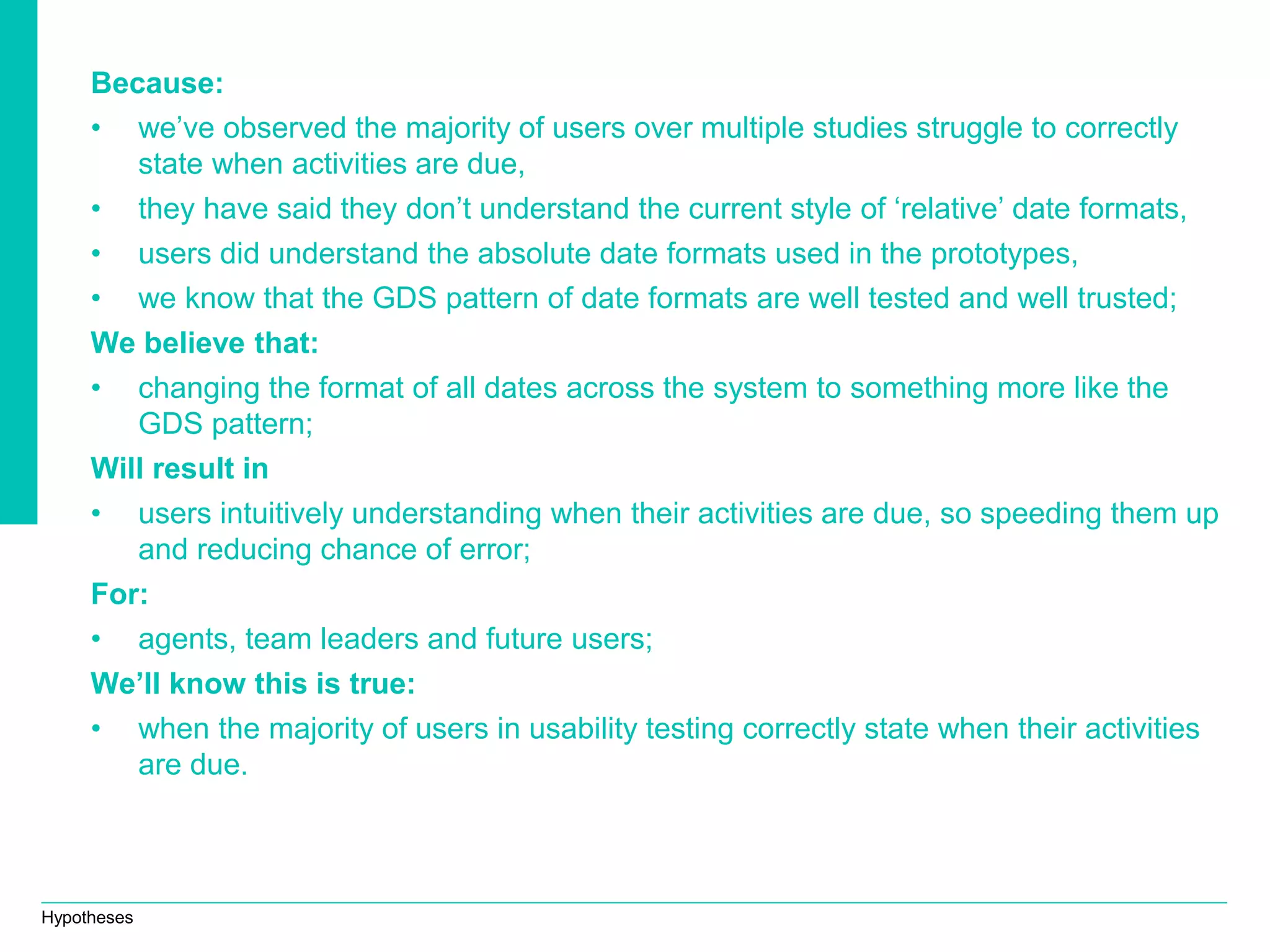
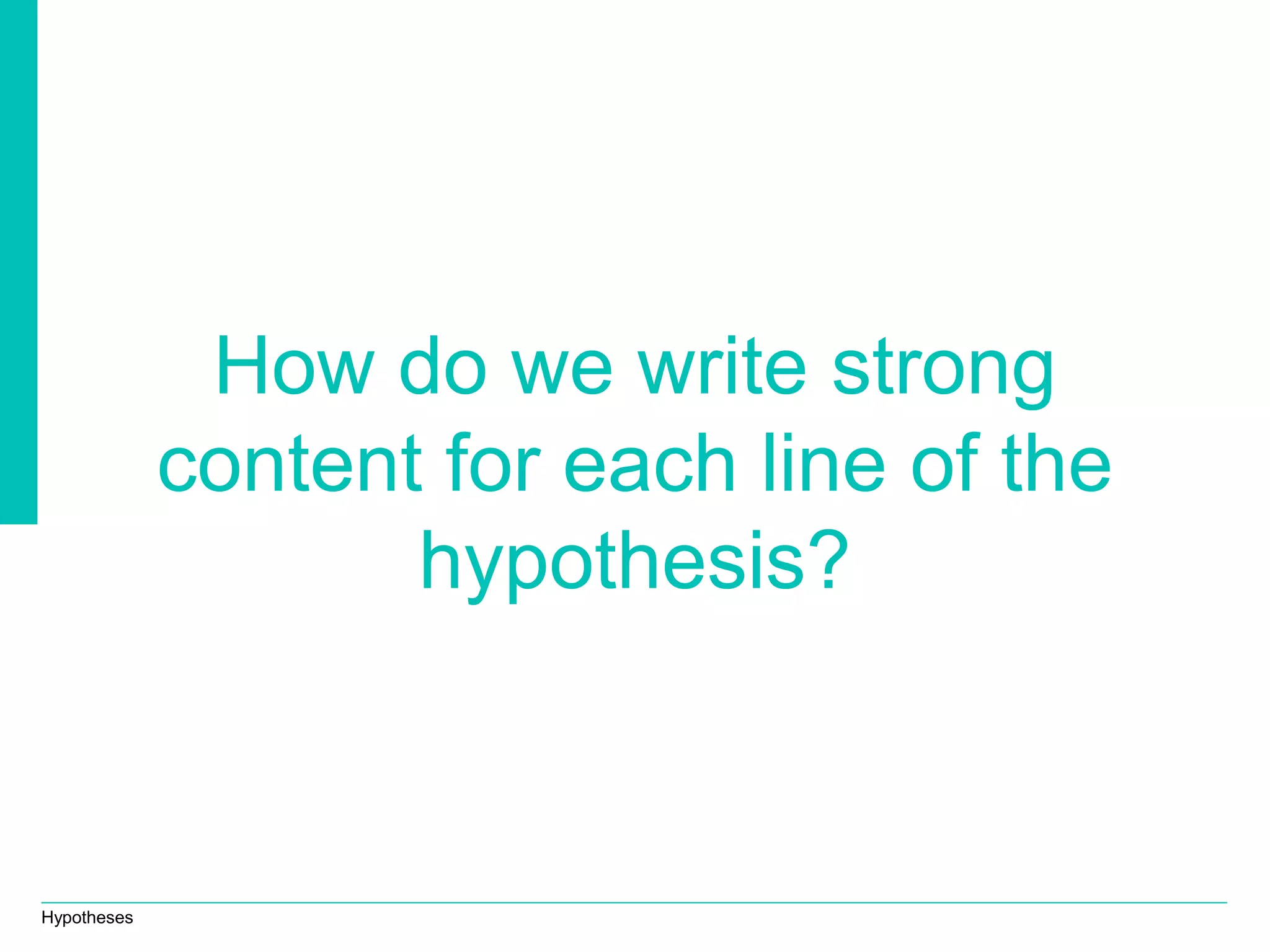
![Hypotheses
Because [things we know or have seen]
We believe that [idea]
Will result in [outcome]
For [users]
We’ll know this is true when [evidence]](https://image.slidesharecdn.com/writingeffectivedesignhypotheses-180118114153/75/Writing-effective-design-hypotheses-17-2048.jpg)

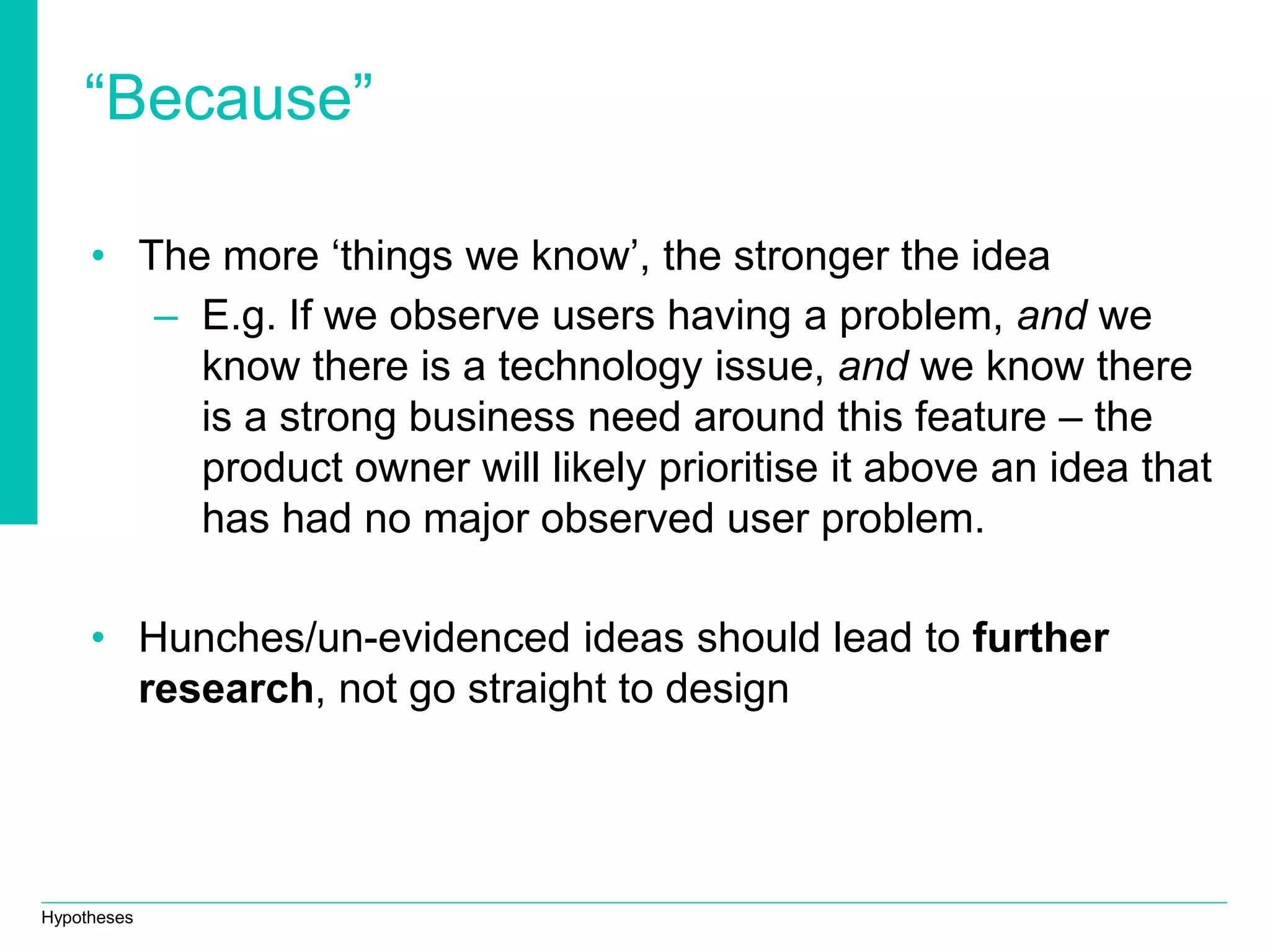
![Hypotheses
Because [things we know or have seen]
We believe that [idea]
Will result in [outcome]
For [users]
We’ll know this is true when [evidence]](https://image.slidesharecdn.com/writingeffectivedesignhypotheses-180118114153/75/Writing-effective-design-hypotheses-20-2048.jpg)
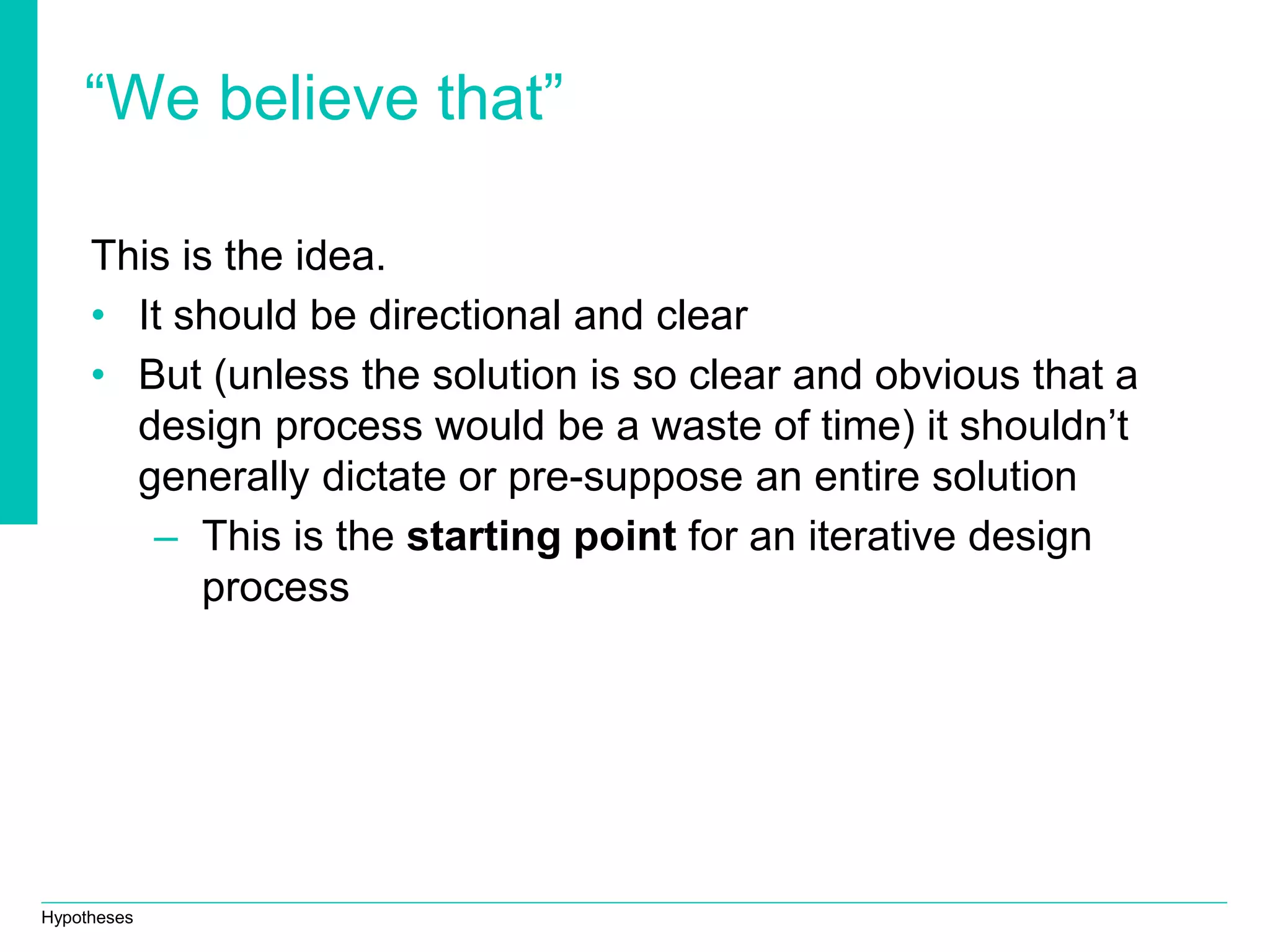
![Hypotheses
Because [things we know or have seen]
We believe that [idea]
Will result in [outcome]
For [users]
We’ll know this is true when [evidence]](https://image.slidesharecdn.com/writingeffectivedesignhypotheses-180118114153/75/Writing-effective-design-hypotheses-22-2048.jpg)

![Hypotheses
Because [things we know or have seen]
We believe that [idea]
Will result in [outcome]
For [users]
We’ll know this is true when [evidence]](https://image.slidesharecdn.com/writingeffectivedesignhypotheses-180118114153/75/Writing-effective-design-hypotheses-24-2048.jpg)
